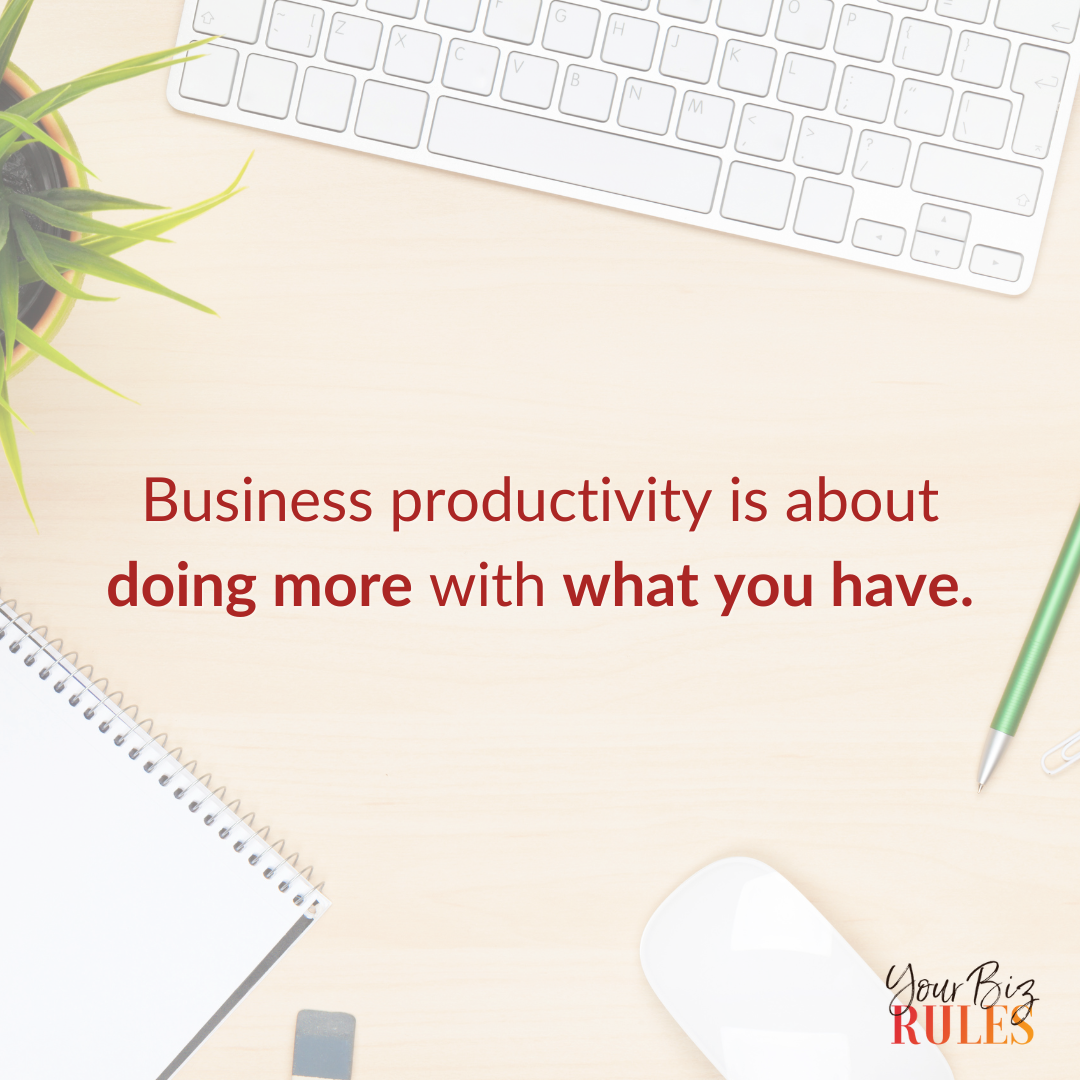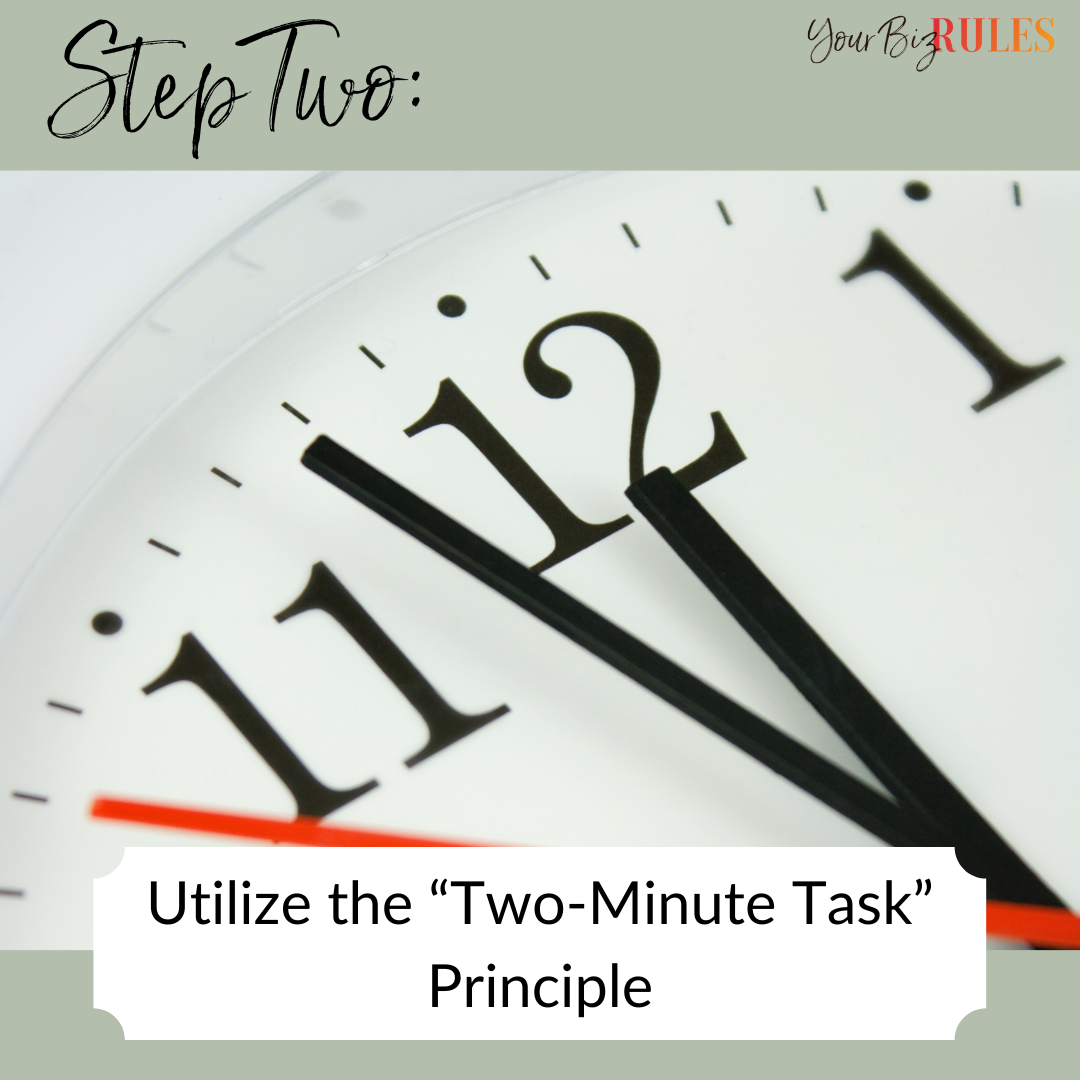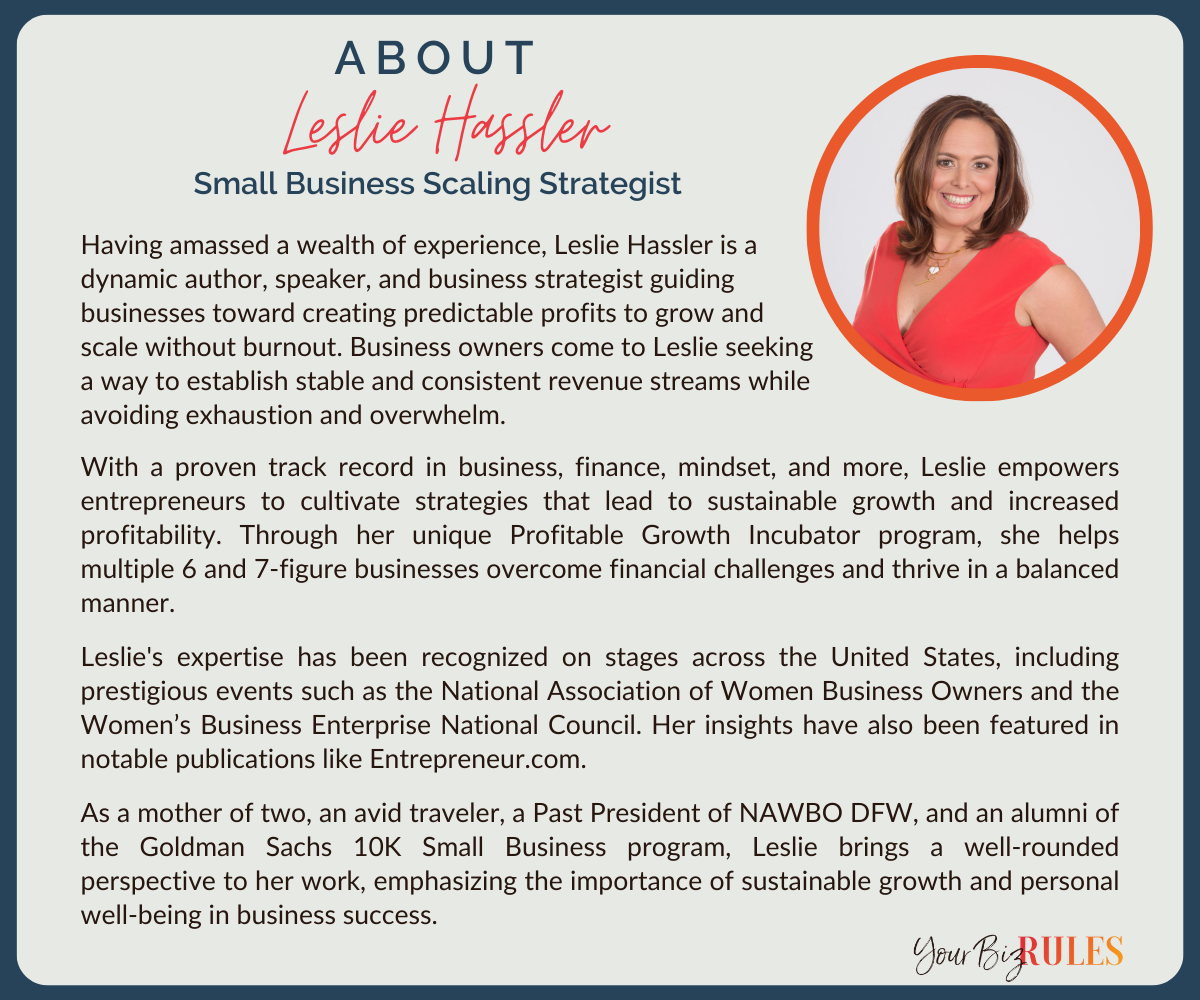Unlock Business Productivity: How to Break Free from the Tyranny of a To-Do List!
Summary: Do you feel like you're drowning in a sea of tasks in your small business?
The entrepreneur to-do list is the go-to tool for many entrepreneurs because it helps them manage their day-to-day tasks while planning for future growth and development. However, some potential pitfalls come with this method.
Dump the Entrepreneur To-Do List and get back on top with this tip and a tool. It's easy to use and helps you prioritize what needs accomplishing first so that nothing falls through the cracks.
We'll help you get more done so that you can focus on what matters most!
What is Business Productivity, and Why is It Important?
“Business productivity” is one of those things that sounds all corporate and stiff, but really, it's pretty simple and super important.
Business productivity is doing more with what you have. It's about choosing the most important tasks, making your work process simpler and faster, and making sure the results are really good. This helps your business grow and stay ahead of the competition without spending more.

Remember how we all relied on a to-do list when we started our businesses? They were great at keeping things straight, but as your business grows, they might need to cut it. Why? It's easy to get caught up in crossing off tasks and feeling productive, but are those tasks really moving your business forward?
Here's the problem: real productivity isn't just doing things on your to-do list. It's about doing the things that count and genuinely help your business grow.
It's choosing where to focus your energy. You want to invest in activities that will yield the best results, not just the ones that are easiest to handle.
As our businesses evolve, so should our approach to getting things done. It's about more than just being busy. It is about being smart and intentional with our time. We need to be strategic about what gets our attention and bold enough to step back from what doesn't.
Navigating Business Productivity Challenges: Beyond the To-Do List
Running an advanced-level small business is a whole different experience. It's not just about the product or service you offer; it's about leading teams, refining systems, and juggling numerous responsibilities. In this dynamic environment, a traditional to-do list just doesn’t cut it.
I remember the struggle myself. Seven years ago, I was drowning in my to-do list, with pages filled front to back in an endless stream of tasks scribbled on a legal pad. It was overwhelming, and it started to take a toll on the quality of my work. That's when it hit me: my trusty to-do list wasn't a tool for productivity; it had become a source of stress and inefficiency.

Now, let’s shift the focus to you. You're running a small business, and your to-do list keeps growing. Cross one item off, and two more take its place. It's like running on a treadmill – moving but not getting anywhere.
If this sounds like you, I have good news: I've been in your shoes and discovered a way out. I learned the secret to ditching the endless to-do list and becoming more productive.
The Shift to the Focus Sheet
Inspired by David Allen's "Getting Things Done," I transitioned from a never-ending to-do list to a system that works: The Focus Sheet. It was like I had upgraded from an old bike to a sleek motorcycle.
The Focus Sheet forces you to prioritize what truly matters, giving you a panoramic view of your week, not just the individual tasks. And trust me, by focusing less on your to-do list, you'll get more done and drive your business to new heights.
The Five Steps To Unlocking Business Productivity With The Focus Sheet
Step 1: Understand "Eat the Frog"
In an Ohio newspaper article, Mark Twain was reported to say, “If you swallowed a frog every morning, you could be pretty sure that nothing worse would happen to you for the rest of the day.”
Later, it was said that the Mark Twain approach would state, “If you have to eat a frog, don’t look too long. If you have to eat two frogs, don’t eat the smaller one first.”

Since then, "Eat the Frog" has become a business concept representing your most challenging or critical task.
The one you might procrastinate but also the one that can significantly impact your day or your business.
By "eating the frog," you zero in on completing this task first, right at the beginning of your workday.
The benefit is two-fold: not only do you get a major task out of the way, but you also create a domino effect of productivity.
Conquering a big task generates momentum and empowers you to tackle other tasks with a sense of accomplishment and a lighter mental load.
In short, eating the frog means eliminating procrastination by facing your challenges head-on, which supercharges your business productivity.
How to Implement “Eat the Frog”:
1. Identify your "frog" the day before.
2. Tackle it the next day before diving into anything else.
Step 2: Utilize the “Two-Minute Task” Principle
The Two-Minute Task Principle is a productivity hack popularized by David Allen in his book, "Getting Things Done." The concept is deceptively simple but incredibly effective.
If a task takes less than two minutes, do it immediately.
Instead of jotting it down on a to-do list or postponing it for later, you tackle it directly.
This approach is beneficial for several reasons:
1. The time you might spend recording the task and revisiting it later often exceeds the two minutes it takes to complete it.

2. Knocking out quick tasks right away reduces mental clutter. Your mind isn't bogged down by an ever-growing list of tiny tasks that collectively become overwhelming.
3. Accomplishing these quick tasks gives you an instant sense of achievement, energizing you to take on more significant challenges.
In essence, the Two-Minute Task Principle is about saving time and enhancing your productivity and mental clarity by removing small barriers that impede progress.
How to Implement the “Two-Minute Task” Principle:
- Dedicate time post-meetings to sort and handle two-minute tasks.
- Delegate or defer non-urgent tasks.
Step 3: Use the “Time-Blocking Pomodoro” Technique
Time-blocking is an essential productivity strategy.
The Pomodoro Technique is one of its most effective implementations.
It was invented by Francesco Cirillo in the late 1980s. The Pomodoro Technique is a time-management method that encourages people to work in bursts of intense focus, traditionally 25 minutes long, separated by short breaks.
These intervals are termed "Pomodoros," after the tomato-shaped kitchen timer Cirillo used during university.
The genius of this technique lies in its simplicity and adaptability.

You start by identifying a task—or a group of tasks—you wish to accomplish. You then set a timer for 25 minutes, dedicating your full attention to the task at hand during this period.
When the timer rings, you take a 5-minute break to relax and recharge.
After completing four Pomodoros, you take a longer break of 15-30 minutes.
Why does this work so well?
The timed intervals serve as a challenge, nudging you to see how much you can accomplish in a set period, thus heightening your focus.
The breaks aren’t just periods of relaxation. They allow your brain to assimilate information and think creatively.
The whole system helps combat procrastination by breaking work into manageable chunks while offering regular rewards in the form of breaks.
So, if you're grappling with distractions, struggling to focus, or just looking to maximize your productivity, implementing the Pomodoro Technique through time-blocking can be a game-changer for your business endeavors.
How to Implement The “Time-Blocking Pomodoro” Technique:
1. Schedule 30-minute gaps between meetings.
2. Use this time to handle a task or group of tasks that need to be completed.
Step 4: Employ a Weekly Focus Sheet
Picture this: It's Monday morning, and you're staring down a week crammed full of responsibilities.
You are juggling between business meetings, team management, and a sea of tasks that could drown even the most accomplished multitasker.
Imagine instead starting your week with a clear, strategic plan.

This is where the Weekly Focus Sheet comes in.
It transforms the traditional to-do list into a dynamic productivity tool.
The "Weekly Focus Sheet" is an ingenious tool that combines some of the most effective productivity hacks: “Eat the Frog,” the “Two-Minute Task Principle,” and the “Time-Blocking Pomodoro Technique.”
This one tool is a seamless, straightforward system designed to rocket your productivity to new heights.
Imagine the Weekly Focus Sheet as a tactical blueprint for your week, a dashboard that gives you a bird's-eye view of what truly matters.
At the top are your "Big Three" goals for the week, and perhaps even for the next week, as we like to encourage forward-thinking.
Then comes the "Eat the Frog" section. This is where you list those high-impact tasks that you may not be looking forward to but are necessary for driving your business forward. The idea is to tackle these tasks first thing, eliminating procrastination and setting a tone of achievement for the rest of the day.
Next to it, you'll find a column for the Two-Minute Tasks. These quick and easy tasks clutter your mind and your to-do list. Your focus sheet allows space in your day to clear these out, like during breaks between meetings or those idle minutes before lunch.
The “Time Blocking Pomodoro Technique” slots naturally into this setup. Use a 25-minute Pomodoro to tackle an "Eat the Frog" task or perhaps to knock out as many Two-Minute Tasks as possible.
The time-bound nature of the Pomodoro Technique ensures that you work with intensity and purpose, while the scheduled breaks offer you moments to step back, reassess, and tackle a Two-Minute Task or two.
Lastly, the "If Time Exists" category. Here, you can list tasks that are nice but not urgent. You can slot in these low-pressure tasks when you find you've efficiently cruised through your must-dos.
The Weekly Focus Sheet is more than just a to-do list. It's a strategic game plan, marrying immediacy with long-term vision and urgency with calm execution.
The result? You’re not just busy; you’re effective. You're not just doing things right. You are doing the right things. And in business, that can make all the difference.
How to Implement the Weekly Focus Sheet:
- Break down weekly goals: Start by breaking your big goals into smaller, manageable tasks.
- Categorize tasks: Label them as "Eat the Frog" for significant tasks, "Revenue-Generating" for tasks that directly impact your bottom line, and so on.
- Time Management: Employ the "Time-Blocking Pomodoro Technique" to tackle tasks with focused intensity, using 25-minute blocks for deep work and short breaks for quick tasks or rest.
- Adapting to Change: This isn't just about doing more; it's about doing more of what matters. The sheet's flexible structure accommodates changes and evolves with your business needs.
The Weekly Focus Sheet is an upgrade, a streamlined system that prioritizes impact over activity. It replaces the hodgepodge of tasks you have scribbled down, offering a well-oiled machine built on scalable and adaptable methods.
It’s not just about doing more. It is about doing more of what matters. It’s a plug-and-play process that can be adapted by anyone on your team, bringing uniformity and predictability to your workflow.

Let’s talk profits. The brilliance of this sheet is that it places revenue-generating tasks - “the frogs,” if you will - at the forefront.
No longer will you waste hours on low-value activities, distracted by the deceptive allure of quick wins. You focus on what will truly drive your business forward. When everyone on your team is aligned in this way, it creates a predictable engine for profit.
Over time, as these best practices become ingrained, your revenue scales up, but your stress level? That scales down.
With the Weekly Focus Sheet, you're not just optimizing your time but reclaiming it. It offers a sustainable way to manage your energy, integrating breaks and low-priority tasks to refresh your mind. You ditch the fatigue while embracing sustainable growth by working in sync with your natural rhythm and prioritizing tasks that genuinely matter.
So, are you ready to ditch that antiquated to-do list for a system that scales your business and safeguards your well-being? Switch to the Weekly Focus Sheet and usher in an era of predictable profits without burnout.
Your Move: Embrace Change, Embrace Success
The decision is now yours. Do you continue down the familiar path with your well-worn to-do list, hustling day in and day out with mixed results? Or do you take a bold step forward, choosing a path that leads to predictable success and well-being?
Ask yourself: Are you the forward-thinking entrepreneur ready to leave behind outdated practices for a system that promises, delivers consistent profits, and wards off burnout? Are you prepared to adopt the Weekly Focus Sheet and align yourself with the innovators and trendsetters who have mastered the art of smart scaling?
Remember, while you ponder, your competitors aren't resting. This is your moment, your opportunity to propel your business to new heights, to turn aspirations into achievements. It all starts with a simple, decisive action.
As a bonus, I’ll offer a complimentary consultation to walk you through your first week, setting you on a path to immediate and impactful change. Your future self will be grateful for this choice. Say yes to transformation, yes to increased earnings, and a resounding yes to a brighter, more successful future.
If you enjoyed this article, check out How To Embrace Achieving More With Resources You Have.

